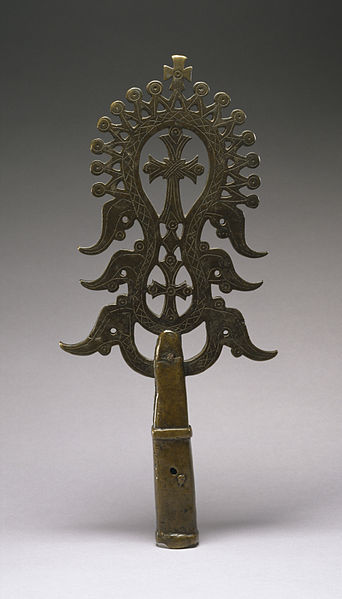Ethiopia is one of the oldest countries in Africa; the emergence of Ethiopian civilization dates back thousands of years. Abyssinia or rather "Ze Etiyopia" was ruled by the Semitic Abyssinians (Habesha) composed mainly of the Amhara, Tigrayans and the Cushitic Agaw. In the Eastern escarpment of the Ethiopian highlands and more so the lowlands were the home of the Harari/Harla that founded Sultanates such as Ifat and Adal and the Afars. In the central and south were found the ancient Sidama and Semitic Gurage, among others.
Leaping Ibex, found in northern Ethiopia, probably created around the first century BC in D'mt.
A stela with an ibex and three Arabian oryx, associated with Astar (ዐስተር), Semitic god of the Morning and Evening Star, found at Axum
King Ezana's Stele in Aksum
An Aksumite palace at Dungur
The Zagwe dynasty was a medieval Agaw monarchy that ruled the northern parts of Ethiopia and Eritrea. The Agaw are a Cushitic ethnic group native to the northern highlands of Ethiopia and neighboring Eritrea. Centered at Roha, it ruled large parts of the territory from approximately 1137 to 1270 AD, when the last Zagwe King Za-Ilmaknun was killed in battle by the forces of the Amhara King Yekuno Amlak. The Zagwe are most famous for their king Gebre Meskel Lalibela, who is credited with having ordered the construction of the rock-hewn monolithic churches of Lalibela.
Church of Saint George, Lalibela constructed during the reign of King Gebre Mesqel Lalibela
12th century mural showing the baptism of Jesus Christ. Yemrahana Krestos Church, Lalibela.
Processional cross, Lasta. While undated it is, like similar shaped crosses, commonly associated with the Zagwe dynasty.
18th-century copy of land grant of King Tatadim (12th century) stored in the Ura Masqal church.








